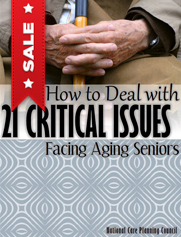
Medicaid is the best way to cover long-term care. To learn more about Medicaid, it is worth researching. You should shop around to find the best coverage. It is crucial to learn about the role of Medicaid in the payment for long-term care insurance before you buy it. Be sure to get the right coverage and not only what you think is necessary. Although long-term care insurance can be a great way for you to avoid major financial losses, it doesn't guarantee complete coverage.
Costs
The cost of long-term insurance can vary based on your gender and age. The average 55-year-old male will pay $1,092 a year for a policy, while a 65-year-old female will pay around $158 per month. The American Association for Long-Term Care Insurance publishes a 2022 price index. For example, a couple can expect $2,080 per annum for two policies at $168,500 when they turn 85.
The cost of long term care insurance varies depending on geographical location, care level, and company. Genworth provides a cost estimate tool to help you determine the median cost in each area of the United States. This will allow you to plan in advance. And if you need assistance paying for long-term care in the future, Medicaid and reverse mortgages can provide funds for you. If you're worried about cost, this could be an option.

Protection
Medicare Advantage is a program offered by the federal government that provides long-term coverage. These plans cover Medicare benefits plus extra benefits such as dental care, hearing aids, vision care, and gym memberships. Medicare Advantage plans are expected to expand their coverage in 2020. Adult day care, non emergency transportation, and home modifications are some other benefits. If you do not qualify for Medicare's LTC, you might have to pay for them yourself or apply to a need-based benefit.
Medicare was not intended to provide coverage for elderly and disabled people. It did however include custodial assistance, which provides help with ADLs like bathing, dressing, and eating. The Federal-State Medicaid program supports people with LTC but cannot prevent financial catastrophes caused by an extensive need. LTC services are costly, and can often be difficult to access for many people. This is why it is so important to determine LTC coverage.
There are several options
Original Medicare does not provide coverage for long-term health care. Medicare Advantage is gradually expanding its coverage. Additionally, private payment options are available, including government aid, long-term health insurance, and hybrid policies. These policies combine long-term, life insurance and long care coverage. Your circumstances and the level of care you need will determine how much coverage you get. To determine what your options are, contact your Medicare plan provider.
Medicare Advantage plans provide additional benefits like nursing home care. The coverage provided by a Medicare Advantage plan might only cover a limited amount of care. Medicaid is a popular long-term coverage option, but eligibility requirements can vary by state. Medicaid eligibility can be extended to those with incomes up to 138% above the federal poverty levels, but this does not mean that everyone is eligible.

Medicaid's role in paying for long-term care
Long-term care funding is not only provided by Medicare, but it is also a significant source. A portion of long-term costs can be covered by private insurance plans. Medicaid's waiver program, if you don’t have any private insurance, can help you to pay for care. However, you must meet certain requirements. This might mean that assets must be sold to meet financial obligations. The following are benefits available to Medicaid waiver recipients.
First, Medicaid covers the cost of room and breakfast for beneficiaries who receive home-based nursing care. When Medicaid pays for room and board in an institution, it requires that a portion of your income be applied to the cost of care. Medicaid can penalize you if you sell your house for less than its fair value and may take away your long-term care assistance. It covers the cost for care in institutions.
FAQ
What is an infectious disease?
Infectious disease can be caused by germs (bacteria or viruses) Infectious disease spreads quickly when people come in close proximity. Examples include measles, mumps, pertussis (whooping cough), rubella (German measles), chickenpox, strep throat, tuberculosis, influenza, polio, hepatitis A and B, HIV/AIDS, herpes simplex virus, syphilis, gonorrhea, and chlamydia.
How can I be a creative healthcare professional?
You have many options to become a creative healthcare professional. Many people begin their career as students. Others start out in business or engineering.
Some individuals choose to learn a course about a specific topic. Others choose to enroll in an elective course that explores diverse perspectives on health care and health.
Whatever your pathway, you'll learn about topics related to health and health care through lectures, readings, group discussions, assignments, and projects. You may also attend workshops, conferences, and seminars.
After completing the program, you will have the knowledge to help clients, colleagues, patients, and other members of the health care system.
A doctorate could be your next step.
What about the role of the private sector?
In delivering healthcare, the private sector is vital. It provides equipment that is used in hospitals, for example.
It also covers some hospital staff. So it makes sense for them to take part in running the system.
However, they have limitations.
Private providers are not always able to compete with the free services offered by governments.
They should not try to run the whole thing. This could mean that the system doesn't deliver good value for money.
What does "public health" actually mean?
Public Health refers to the preservation and enhancement of the health status of the community. It is concerned with preventing diseases, injuries, and disabilities, as well as promoting healthy lifestyles; ensuring adequate nutrition; controlling communicable diseases, hazards to the environment, and behavioral risk.
What impact will there be on the health care sector if there is no Medicare?
Medicare is an entitlement that provides financial help to low-income persons and families who cannot pay their premiums. This program covers more than 40 million Americans.
Without this program, millions of Americans would lose coverage because some private insurers would stop offering policies to those with pre-existing conditions.
Statistics
- About 14 percent of Americans have chronic kidney disease. (rasmussen.edu)
- Healthcare Occupations PRINTER-FRIENDLY Employment in healthcare occupations is projected to grow 16 percent from 2020 to 2030, much faster than the average for all occupations, adding about 2.6 million new jobs. (bls.gov)
- The healthcare sector is one of the largest and most complex in the U.S. economy, accounting for 18% of gross domestic product (GDP) in 2020.1 (investopedia.com)
- For the most part, that's true—over 80 percent of patients are over the age of 65. (rasmussen.edu)
- For instance, Chinese hospital charges tend toward 50% for drugs, another major percentage for equipment, and a small percentage for healthcare professional fees. (en.wikipedia.org)
External Links
How To
What are the main segments of the Healthcare Industry industry?
The key segments of healthcare include pharmaceuticals, diagnostics biotechnology, therapeutics, diagnosis, biotechnology and medical equipment.
Defibrillators are blood pressure monitors, blood pressure monitors, stethoscopes or ultrasound machines that can be used to diagnose, prevent, or treat diseases. These products are used to diagnose and prevent or treat disease.
Pharmaceuticals are drugs that are prescribed to treat disease or reduce symptoms. Examples include antibiotics, antacids, antihistamines, contraceptives, etc.
Diagnostics are tests that are performed by labs to diagnose illness or injury. There are many types of diagnostics: blood tests; urine samples; CT scans; MRI scans; X-rays.
Biotechnology refers the process of creating useful substances from living organisms such as bacteria. There are many examples, including vaccines, insulin, or enzymes.
Therapeutics refer to treatments given to patients to alleviate or treat symptoms. They can involve drugs, radiation therapy or surgical interventions.
The computer software programs called health information technology help doctors and their teams to manage patient records. It helps them track which medications are being taken, when they should be taken, and whether they are working properly.
Anything used to diagnose or treat illnesses and conditions, such as diabetes, is medical equipment. Dialysis machines include pacemakers, ventilators and operating tables.